★★★
“Red Nose Day?”
Dir: Yôichi Sai
Star: Miho Tsumiki, Yôko Kikuchi, Kumiko Takeda, Mikari
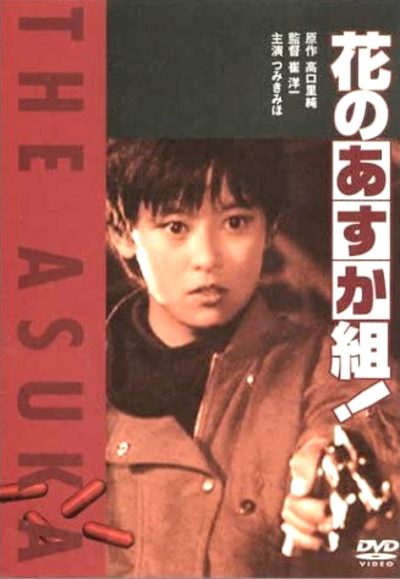 This is based on a 34-volume manga series by Satosumi Takaguchi, which began publication in 1985. It is far from the only adaptation. There have also been two OVAs, a live-action drama series, a different feature version made in 2009, and even a pair of drama CDs. This feature, however, is the only one available in the West to date with subtitles. It takes place at an indeterminate point in the future – the year is given as 199X – when “the streets are overflowing with drugs and violence”. There’s a battle for control, which conveniently seems to be along gender lines. The unfortunately naned male “Red Nose Gods”, under boss Toki Masamune, are going up against the all-girl Hibari Group. They are named after their leader (Mikari), who speaks only through her lieutenant, or with the aid of an artificial voice-box.
This is based on a 34-volume manga series by Satosumi Takaguchi, which began publication in 1985. It is far from the only adaptation. There have also been two OVAs, a live-action drama series, a different feature version made in 2009, and even a pair of drama CDs. This feature, however, is the only one available in the West to date with subtitles. It takes place at an indeterminate point in the future – the year is given as 199X – when “the streets are overflowing with drugs and violence”. There’s a battle for control, which conveniently seems to be along gender lines. The unfortunately naned male “Red Nose Gods”, under boss Toki Masamune, are going up against the all-girl Hibari Group. They are named after their leader (Mikari), who speaks only through her lieutenant, or with the aid of an artificial voice-box.
Out heroine, Asuka (Tsumiki), has just peeled off from Hibari, along with her best friend Miko (Kikuchi), seeking to make their own way on the streets. They quickly gain the enmity of the Red Nose Gods, but more troubling, is that Hibari has ordered Yoko (Takeda) to kill them both. For Yoko is Miko’s sister. This is established quite quickly, and the rest of the movie is various shenanigans as the two groups struggle for power, while the local corrupt police run interference on their own agenda. Will there be betrayal, plotting and heavy use of a Rolling Stones song? The answer is yes, to all three elements.
This feels like it ought to be a straight-to-video title, of which there was no shortage around the time this came out (1988). But the production values are considerably better than normally present in that kind of thing. The cost of merely licensing the Stones’s Satisfaction would have exceeded the entire budget of many V-cinema entries. There are also some quite spectacular sets built to represent “New Kabuki Town”, after the apparent near-collapse of normal society, and the photography is positively theatrical in quality. If you’d told me this was a Japanese remake of Streets of Fire, I would have believed you. Elements like Hibari’s voice-box indicate there was a decent amount of thought put into the various elements too.
So why is it… kinda dull? Or at least, it seems like it should be considerably more exciting. While there are occasional upticks in energy, it feels considerably more chatty than I wanted. Yoko, in particular, seems to act in ways that defy any kind of internal logic, yet are necessary to propel the narrative forward. What is her motivation? What, indeed, is anyone trying to accomplish? For a time, it looks as if Asuka is seeking to take over from Hibari, or replace Toki. This all goes away quite quickly, left by the wayside, and leaving a vacuum in terms of character goals. It ends instead in a straightforward duel between Asuka and Yoko, and there’s a definite sense that, once the dust settles, nothing much will have changed. Maybe that’s the point.





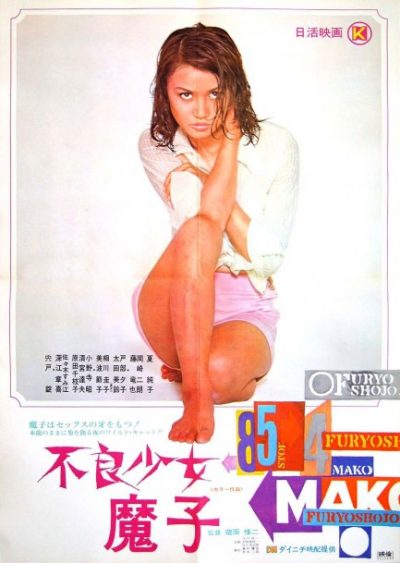 This was among the very last of the “pinky violence” films made by the
This was among the very last of the “pinky violence” films made by the 
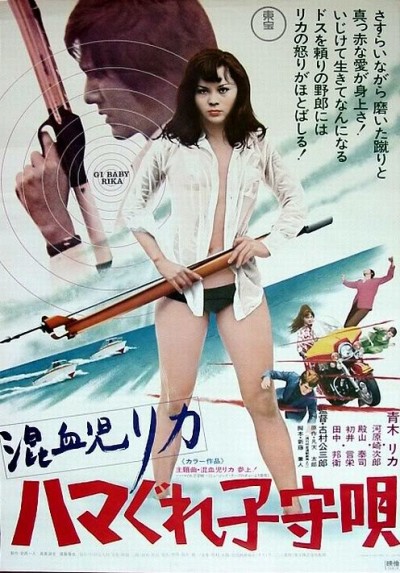
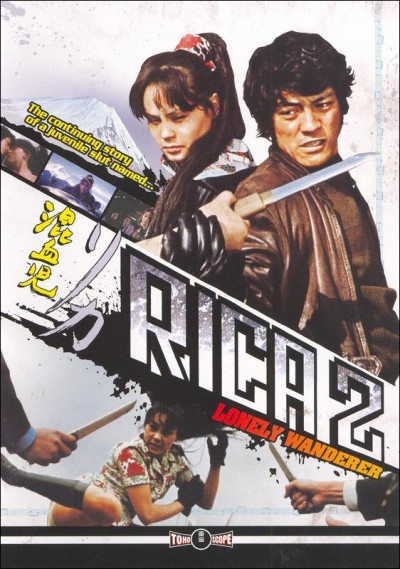
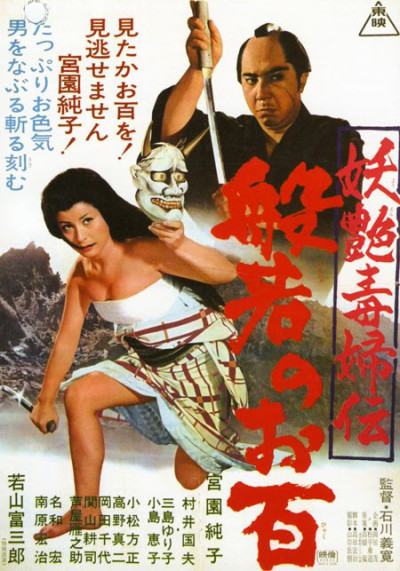
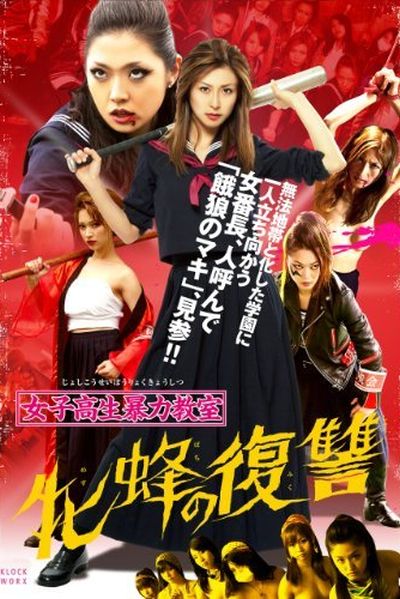
 Following on more or less directly from the events of
Following on more or less directly from the events of 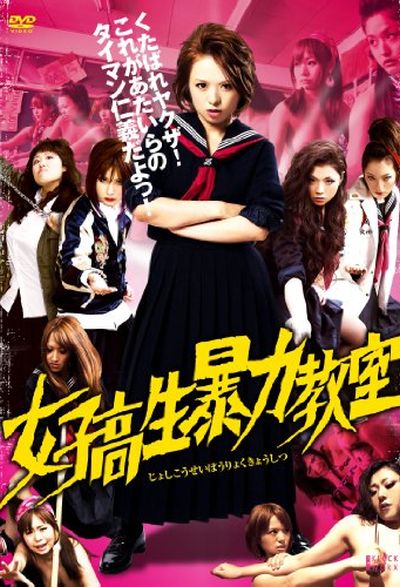
 Aoki appears to have streaked like a star across the pinky violence firmament, appearing only in the trilogy of which this is the first, and one other film, Gakusei yakuza, before returning to the streets whence she came. Or I like to think that was her origin, anyway, and this is less a dramatic work, than a documentary depicting her life. Sharing the same name, Rika is the child of rape, a GI impregnating her mother before being deployed to Korea, and it’s not long before one of her mother’s boyfriends/customers [the film is sketchy on this detail] has taken a similar approach to Rika. She ends up heading an all-girl gang, but is sent to a reformatory after an opposing, male gang leader accidentally dies during a fight with her. But it’s not long before our heroine escapes, only to find some rivals have taken advantage of her absence, and the rest of the gang has been abducted and are about to be sold off to Vietnam. The boss offers to sell them to her instead, and Rika blackmails her father into paying up, only for the women to be sold anyway.
Aoki appears to have streaked like a star across the pinky violence firmament, appearing only in the trilogy of which this is the first, and one other film, Gakusei yakuza, before returning to the streets whence she came. Or I like to think that was her origin, anyway, and this is less a dramatic work, than a documentary depicting her life. Sharing the same name, Rika is the child of rape, a GI impregnating her mother before being deployed to Korea, and it’s not long before one of her mother’s boyfriends/customers [the film is sketchy on this detail] has taken a similar approach to Rika. She ends up heading an all-girl gang, but is sent to a reformatory after an opposing, male gang leader accidentally dies during a fight with her. But it’s not long before our heroine escapes, only to find some rivals have taken advantage of her absence, and the rest of the gang has been abducted and are about to be sold off to Vietnam. The boss offers to sell them to her instead, and Rika blackmails her father into paying up, only for the women to be sold anyway. If the first Queen Bee movie was a fairly effective romp through the genre, that’s a lot less the case fot the follow-up, with Ike largely floundering around, as Maki, the leader of the Pearl Gang, who finds herself embroiled in a battle with another crew, the Black Lilies and their leader, Yuri (Kazama). Their spat is interrupted, when the Kuroji clan of yakuza throw their weight behind the Black Lilies. However, the triumph of the Lilies is short-lived, as they find out that they are about to be forced into life as prostitutes, for the benefit of their new allies, ending their life of freedom in the ‘hood. There are also subplots in which Yuri’s former boyfriend, Eizo wants to be a top racing driver, bringing him into conflict with the yakuza as well, and a suitcase filled with stolen guns.
If the first Queen Bee movie was a fairly effective romp through the genre, that’s a lot less the case fot the follow-up, with Ike largely floundering around, as Maki, the leader of the Pearl Gang, who finds herself embroiled in a battle with another crew, the Black Lilies and their leader, Yuri (Kazama). Their spat is interrupted, when the Kuroji clan of yakuza throw their weight behind the Black Lilies. However, the triumph of the Lilies is short-lived, as they find out that they are about to be forced into life as prostitutes, for the benefit of their new allies, ending their life of freedom in the ‘hood. There are also subplots in which Yuri’s former boyfriend, Eizo wants to be a top racing driver, bringing him into conflict with the yakuza as well, and a suitcase filled with stolen guns.